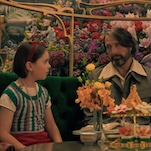Even apart from nearly driving the island’s population to extinction, Dutrou-Bornier had a fascinatingly checkered past: After serving in the Crimean War, he abandoned his wife and child in France and took to the sea, sailing to Peru, where he was arrested and sentenced to death for arms dealing. The French government secured his release, and he set sail for Tahiti to recruit local labor for coconut plantations.
On the run from gambling debts, Dutrou-Bornier acquired a ship, sailed to Easter Island, and then burned the ship. He began buying up land from the locals and then married a local woman, Koreto, despite the fact that he and she were already married to other people. Wikipedia describes this as “he seized Koreto,” so it seems she was not a willing partner. Dutrou-Bornier quickly declared himself governor of the island and his new bride its queen. Although that royal title was not recognized by many of the island’s inhabitants, it was passed down to Koreto and Dutrou-Bornier’s daughter before his empire disintegrated. Dutrou-Bornier died in 1876 when—it’s best to simply quote Wikipedia here—he “was killed in an argument over a dress, though his kidnapping of pubescent girls may have also motivated his killers.”
Thing we were happiest to learn: The Rapa Nui bounced back. After Dutrou-Bornier’s death, Alexander Salmon Jr., the half-English, half-Tahitian son of Tahitian Queen Pōmare IV’s sister (who would eventually become queen herself), managed to acquire Dutrou-Bornier’s Easter Island holdings. He had learned the Rapa Nui language from laborers working in Tahiti, and made a project of repatriating Rapa Nui to Tahiti (although, before you think he was entirely selfless, it was mostly as cheap labor). He also planted coconuts—the first significant trees on the island in two centuries—and encouraged the island’s first tourist trade. The Rapa Nui population began to recover, and after 10 years as de facto ruler, Salmon sold the island to the Chilean government, which still maintains sovereignty over the island today. While not nearly as colorful as his predecessor, after selling Easter Island, Salmon did flee Tahiti to escape assault charges and collected oral histories in the Tuamotus. Late in life, he pursued marriage to Hawaii’s former queen, Liliuokalani, although the proposal was merely a scam to use her money for his own debts.
Thing we were unhappiest to learn: While most of the world considers the moai statues among the world’s greatest archaeological treasures, the Rapa Nui were far from reverent. When Captain Cook led the second European expedition to the island in 1774, he noted that many of the moai were lying face down—they had been knocked down by warring factions on the island. Huri mo’ai or “statue toppling” continued through the 1830s until most of the moai had been knocked over. By the 1860s, the only standing moai were a group partially buried on a hillside that were probably too entrenched to move. It wasn’t until the late 1950s that archaeologist William Mulloy began a decades-long project to restore the statues. Today roughly 50 moai have been righted, and a few have been transported to museums worldwide.
Also noteworthy: The Rapa Nui’s motivation for building stone heads is still unknown, but one interesting theory suggests they were talismans against leprosy. While other Pacific societies were able to quarantine lepers to an outlying island, Easter Island had no such place, so if leprosy did hit, people would have been face to face with lepers (and the risk of infection). The exaggerated features of the moai seem to be exaggerated in exactly the opposite ways leprosy changes a sufferer’s appearance. Leprosy destroys the cartilage in the nose—the moai have prominent noses. Leprosy leaves the lips retracted and swollen—the moai’s lips are thin and pursed tightly. Leprosy often paralyzes hand muscles, turning hands into claws—the moai have straight, extended fingers. It’s thought that the moai were created to represent a stylized ideal and to psychologically counteract the deformations of the disease.
Best link to elsewhere on Wikipedia: Rapa Nui’s near-total loss of natural resources and population can be termed a societal collapse, and Wikipedia goes in-depth on the various causes, which cover Rapa Nui-style overpopulation and resource depletion but also include everything from natural disaster, political revolution, and foreign invasion. Some combination of these factors brought about the end of empires around the world, including Rome, the Maya, the Han Dynasty, Babylonia, and the once-unassailable empire of Blockbuster Video.
Further down the wormhole: When the Rapa Nui deforested their island in an effort to sustain an overabundant population, they were sowing the seeds of their demise. Without trees, they had no wood to build fishing boats, cutting off one source of food. And without trees to nest in, the land-based birds on the island were quickly extinct. All that remained were seabirds until trees were replanted decades later. Seabirds face threats from humans, including pollution, commercial fishing, and oil spills, but one surprising nonhuman threat are feral cats. Despite being bound by gravity, a feral cat can take down a bird as big as an albatross. Wikipedia’s feral cat page leads to a subsection of “human-cat interaction” that involves such varied topics as cat massage, cat meat, and the ship’s cat. Cats were often an important member of a ship’s crew, killing mice and rats that would otherwise eat crucial stores of food and spread disease. We’ll look at some of the more memorable feline sailors next week.








































